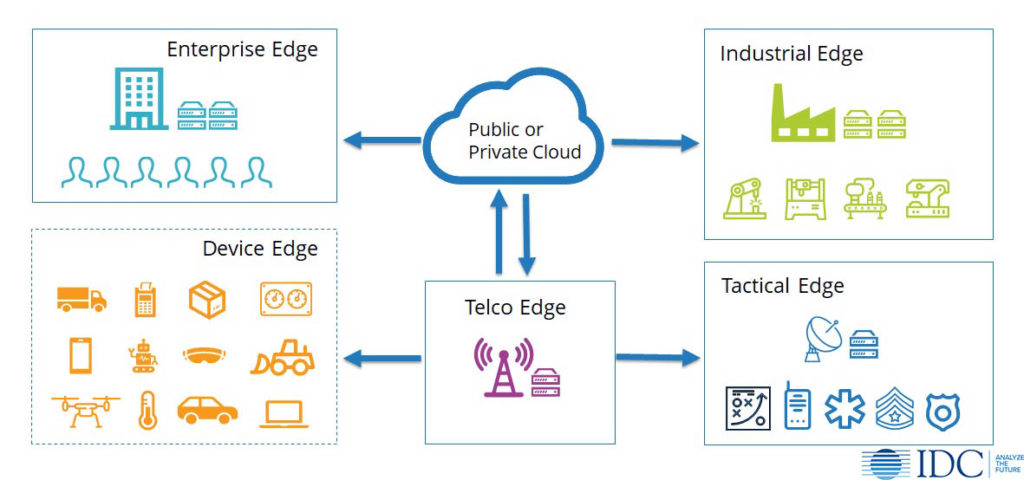It is almost impossible to have a conversation regarding technology without touching on some aspect of edge computing. After all, IDC predicts that by 2023, over 50% of new enterprise IT infrastructure deployed will be at the edge rather than corporate datacenters, up from less than 10% today.
The concepts surrounding edge refer to a distributed computing paradigm that includes the deployment of processing and storage resources outside of centralized datacenter and cloud infrastructure as close as necessary to the point of data generation. Of course, edge consists of more than just hardware. It also includes software, provisioned services, and professional services.
The conversation surrounding edge can be different depending on context. While edge computing provides common benefits in terms of reduced latency for real-time applications, business continuity in situations with limited connectivity, and cost reductions by reducing the movement of data, the vocabulary used to articulate use cases can vary.
For this reason, several types of edges have emerged.

Enterprise Edge
These are typically remote office or branch office (ROBO) scenarios. While it is possible to deliver IT services to local employees from a central source, it is common to have infrastructure in these locations. This could be something as simple as file and print services to more resource-intensive distributed applications. In either case, these locations represent a situation where there is little to no IT staff, requiring a higher emphasis on low-touch deployment and remote management.
Industrial Edge
IT and OT convergence continues to be driven by digital transformation and the intersection of these efforts is most often at the edge. Industrial companies have long looked to technology to assist with plant automation and optimization. However, these systems have traditionally been managed separately from corporate computing resources. As operation teams began experimenting with machine learning and AI in the cloud, they realized that latency or lag in response times was prohibitive for real-time applications. Edge computing solves this problem by training models in the cloud and running them on local infrastructure. It also enables these companies to move away from closed, proprietary systems to an open architecture that can run mixed workloads.
Device Edge
Data generated from IoT devices has been an accelerator for edge computing. As these deployments grow, scalability becomes a top concern. The ability to process data locally in order to deduplicate, summarize, and derive insights can reduce load on networks. It also provides a level of autonomy in places where connectivity is not always available. As these devices begin to act more like intelligent endpoints, embedded business logic that is remotely deployed and managed is unlocking a new set of advanced use cases.
Telco Edge
Not all edge computing must occur on-premise and telecommunications providers are playing a larger role in distributed infrastructure. Whether to support the rollout of 5G networks or enable new enterprise services like MEC, edge technologies are pervasive in the telco market. As these companies modernize their infrastructure, there is greater adoption of virtualized network functions (VNF) and cloud-native network functions (CNF). More recently, CDNs are offering general compute services that augment their networks and cloud service providers are extending their reach into network infrastructure.
Tactical Edge
During times of emergency, first responders rely heavily on whatever information is available to inform their disaster response plan. This involves creating temporary operations facilities that must collect and analyze multiple real-time data feeds. Knowing the location of personnel, vehicles, and equipment is critical to maximizing the effectiveness of the operation. These scenarios are anything but ideal for deploying technology and require ruggedized edge-enabled solutions that are highly secure and can run independent of network availability.
The point is that edge solutions are anything but one-size-fits-all. Whether it is large stationary systems operating in harsh environments or small devices that are constantly on the move, edge provides the ability to distribute infrastructure in a way that reduces latency for real-time applications, mitigates issues with unreliable networks, and allows organizations to react quicker to rapidly changing business conditions.
Interested in learning more?




